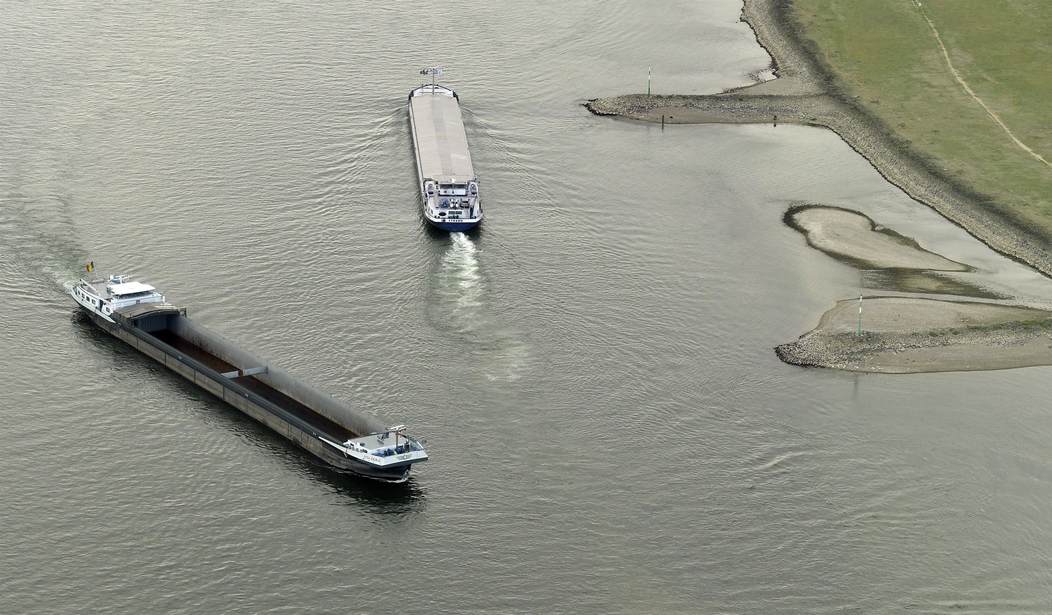Over the summer, Russia pulled out of the Ukrainian grain shipping deal that had been established earlier in the war. Some narrow land corridors for agricultural shipments have been established since then, but supplies have been erratic due to constant shelling by the Russian military. But this month, that situation appears to have changed. Large amounts of grain have been arriving at Ukrainian ports to be loaded onto cargo ships despite Russian threats of attack and explosive mines being set in the Black Sea. The ships have been moving out regularly without any major incidents being reported thus far, but tensions are once again building in the region. The American Navy is operating in the area as well, so the potential for escalation is once again rising. (Associated Press)
Grain thunders into rail cars and trucks zip around a storage facility in central Ukraine, a place that growing numbers of companies turned to as they struggled to export their food to people facing hunger around the world.
Now, more of the grain is getting unloaded from overcrammed silos and heading to ports on the Black Sea, set to traverse a fledgling shipping corridor launched after Russia pulled out of a U.N.-brokered agreement this summer that allowed food to flow safely from Ukraine during the war.
“It was tight, but we kept working … we sought how to accept every ton of products needed for our partners,” facility general director Roman Andreikiv said about the end of the grain deal in July. Ukraine’s new corridor, protected by the military, has now allowed him to “free up warehouse space and increase activity.”
So this was something that the Ukrainians apparently just decided to start doing while lacking other viable options. There was no new agreement reached and Russia hasn’t approved these shipments. But Russia really doesn’t have any authority to block shipping in the Black Sea. They’ve only been able to do that by threatening the use of overwhelming military force. Ukraine really doesn’t have much of a navy of its own. It’s mostly comprised of former civilian craft that were repurposed for military use. They don’t have conventional submarines, but they do have drone submarines that have been used to attack Russian ships. They have naval artillery placements along the coast, but the Russians still command a much greater force at sea.
The United States Navy is operating in the area as well, however. That includes mine sweepers that can help to keep the shipping lanes clear and larger warships in case things get out of hand. Would the Russians really try to sink a Ukrainian cargo vessel at this point, particularly if it was being escorted by American ships? They’ve already sustained some substantial damage. Ukraine announced last week that fifteen Russian naval vessels had been completely destroyed and another dozen were seriously damaged. And yet Russia still has plenty of firepower in the area.
This is one of those frightening scenarios that has been haunting the allies since the beginning of the Russian invasion. If the Russians launch an attack on a Ukrainian freighter and wind up striking an American warship, the rules of the sea allow our captain to return fire. In that scenario, we’re no longer talking about a proxy war. That would be Russian and American naval forces fighting each other directly. That’s pretty much the definition of an “act of war” and the world’s two largest nuclear superpowers might then be at war.
It’s true that some rapid diplomacy might de-escalate a situation like that before mushroom clouds started flaring up over Moscow and New York. But Vladimir Putin is unpredictable on the best of days and the crew currently handling our diplomatic efforts in Washington today doesn’t exactly inspire confidence. I’m going to assume for the moment that all of our naval commanders in the region have been fully briefed in advance and there is some sort of game plan in place providing directions for how to handle such an event. But we’re going to come away looking even weaker on the world stage if Russia puts a torpedo into one of our warships and we don’t respond. We’ve got enough on our hands at the moment with Israel and Hamas. We don’t need the situation in Ukraine flaring up even further.







Join the conversation as a VIP Member